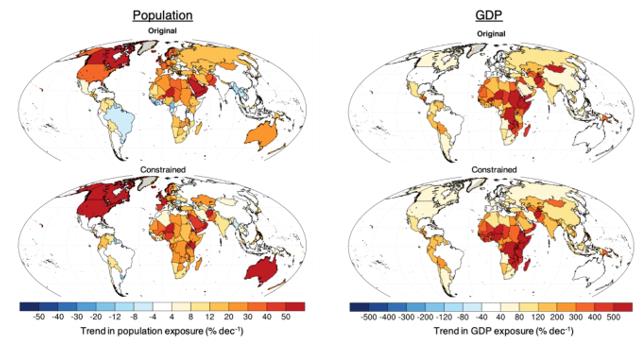Peking University, April 18, 2022: Wildfire is a phenomenon of burning biomass that occurs on natural vegetation types. It is the main source of disturbance of ecosystems and one of the main natural emission sources of aerosols, affecting the global carbon cycle, climate, economy, and society. The frequent extreme wildfire events in recent years have led to many questions: Is the increase in wildfires related to human activities and global climate change? Will this become a new normal? To predict the future trend of wildfires, it is necessary to rely on Earth system models. However, the current Earth system models still have great uncertainty in the simulation of wildfires. Using observational data to correct errors is one of the ways to improve the reliability of model predictions in an effective way.
Recently, Yan Yu, a researcher from the Department of Atmospheric and Oceanic Sciences, PKU School of Physics and Mao Jiafu, a researcher at the Oak Ridge National Laboratory of the U.S. Department of Energy, have cooperated to develop the use of machine learning and 13 CMIP6 earth system models to predict future wildfire distribution. The researchers predict that the burning area and carbon emissions of global wildfires will increase in the next few decades of this century, but the increase is lower than the uncorrected CMIP6 model estimate (Fig. 1).
Fig. 1 Prediction of wildfire carbon emissions trends from 2011 to 2100 based on the CMIP6 model, unconstrained (left) and constrained (right)
Although the CMIP6 model generally overestimates the increasing trend of future wildfires, the inaccurate simulation of the regional distribution of wildfires also means that the CMIP6 model is likely to underestimate the pressure on the population, GDP, agriculture, and other societies in the future. In particular, the researchers pointed out that due to the intensification of drought and vegetation changes brought about by global climate change, the burning area and carbon emissions of wildfires in Africa will increase significantly in the next few decades, which will have an impact on the economic and social development of countries in the region (Fig. 2).
 Fig. 2 Predicted trend of wildfire stress on population (left) and gross domestic product (GDP) (right) from 2011 to 2100, unconstrained (upper row) and post-constrained (lower row) based on the CMIP6 model
Fig. 2 Predicted trend of wildfire stress on population (left) and gross domestic product (GDP) (right) from 2011 to 2100, unconstrained (upper row) and post-constrained (lower row) based on the CMIP6 model
Long-term prediction of extreme climate and environmental events such as wildfires will help to prepare for risk prevention and response in advance but also face methodological challenges.
On March 22, 2022, these relevant research results titled "Machine learning-based observation-constrained projections reveal elevated global socioeconomic risks from wildfire" were published online in Nature Communications. Yu Yan and Mao Jiafu are the co-first authors. Congratulations on their successful research!
Written by: See Tian Ai
Edited by: Ng Joong Hwee
Source: PKU News (Chinese)

